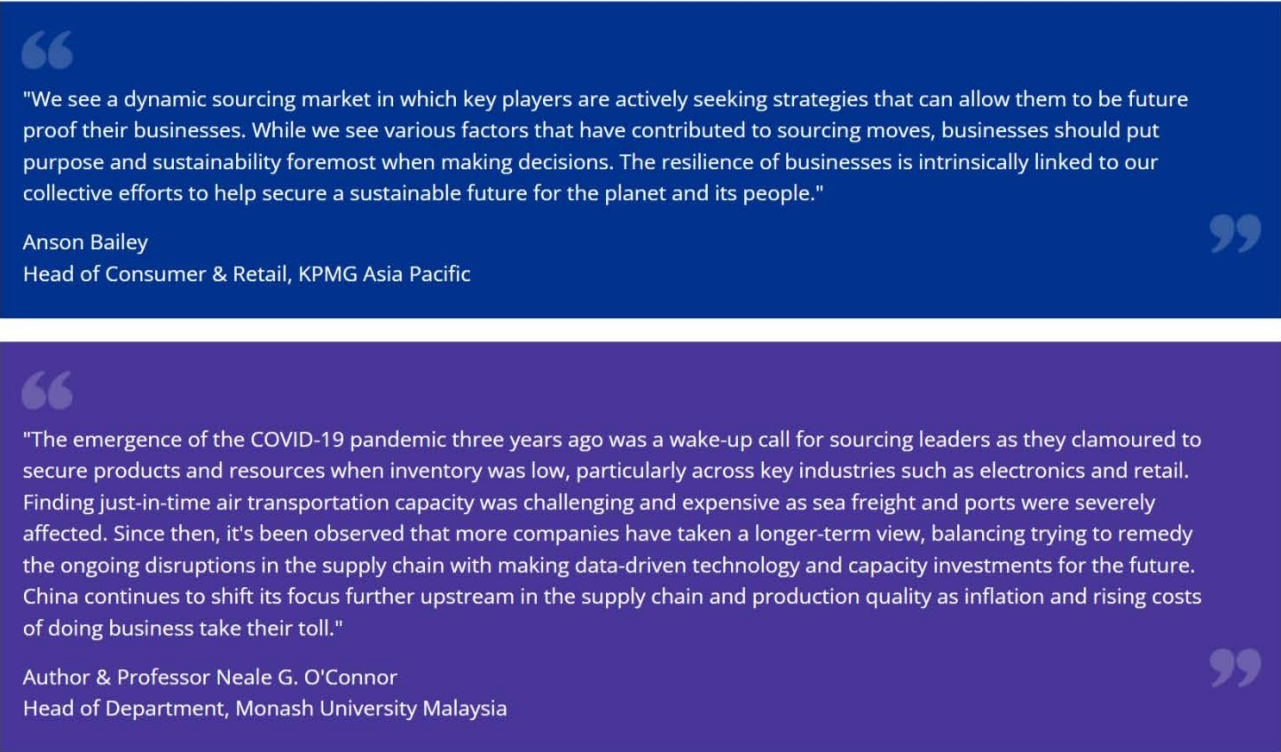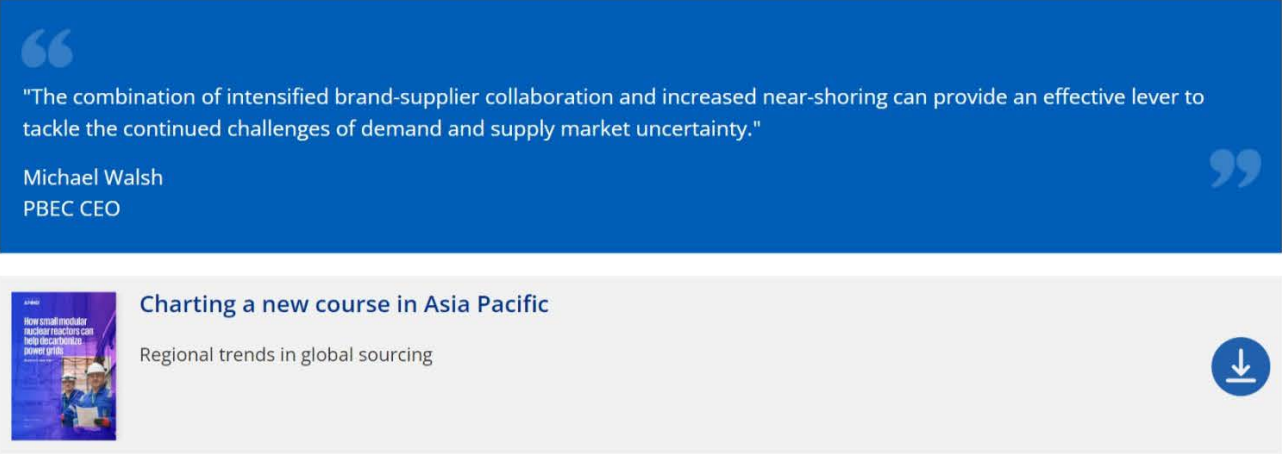Regional trends in global sourcing
As businesses assess their operational capacity needs for a predicted bumpy recovery, to recalibrate during and post-pandemic, it is crucial to understand what brought us to this point and where it is likely leading us.
The Pacific Basin Economic Council (PBEC), Monash University Malaysia and KPMG, together with contributions from PBEC members, are pleased to publish this report on global sourcing, reviewing the most recently announced supply chain and sourcing movements in the region, charting a new course in Asia Pacific.
The data in this report, provided in collaboration with Monash University Malaysia, comprises a sample of 132 companies that are considering changing or have already altered their supply chain destinations between 2018 and 2023, covering 232 sourcing market moves (see Figure 1).
Through web scraping 1,089 relevant news articles were collected from multiple sources, as well as company reports published between 1st January 2016 and January 31st, 2022. In addition, official information and company documents were collected from companies’ webpages as a “measuring stick” to ensure the accuracy of the information.
The report provides some key takeaways and recommendations for business leaders to consider. More importantly, it provides an up-to-date guide on navigating their business through these turbulent times. The report seeks to evaluate the trends and examine the following three areas of interest:
The What – Specific regional factors arising from the ongoing developments in the US-China trade relationship, the economic sanctions imposed on Russia, and finally, the increasing politicisation of economic trade and its encompassment through the lens of national security policy.
The Where – Different trends emerging within each industrial sector and the factors/incentives determining business leaders’ decision making on where to move their sourcing and production capacity, and whether it is ultimately one or multiple alternate destinations they move too.
The How – Based on the above mentioned factors and other considerations, companies are evaluating the markets involved in their sourcing and supply chain operations.
The initial observations from the data are that an extensive overhaul of supply chains and sourcing moves are not necessarily taking place in Asia Pacific. Instead, the data suggests a more considered approach to the pandemic’s supply chain impacts in the region and highlights other reasons behind the movements in capacity. There is a more bullish view on globalisation from Asian-based business leaders, and an increasing appetite for investments in technology to enable increased visibility and traceability to manage supply chains.
Some of the trends observed from the data have placed leading brands and corporations under a magnifying glass, to a point where it became an urgent requirement to obtain the ability to track and trace their supply chains beyond tiers 1 and 2. This has led many companies to upgrade their I.T. capabilities and cyber security protocols and announce strategic partnerships and acquisitions in the ESG specialist space. This highlights the importance the global business community is putting on the development of a digitally-enabled circular economy, as boards pay more attention to reputational risks and public perception associated with the sustainability of business practices.
We hope you will find this report helpful, and welcome your opinion on the sourcing shift patterns in Asia-Pacific.
GET IN TOUCH
Michael Walsh
Chief Executive Officer
Pacific Basin Economic Council






